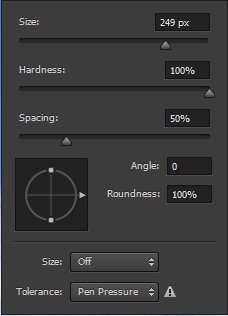
Step 1: Chose an image to work with
Open a photo that you want to extract a background from in Photoshop. In this tutorial I’m going to use a scene of two trees and a blue sky as background, but you can use the same techniques applied here to a variety of images and situations.
Step 2: How the tool works
Even though the name says “Background” eraser, this tool can actually be used to erase a lot more than that, and it works more as a “Color” eraser rather than a “Background” eraser. So to start off let’s select the tool. You can use the shortcut Shift+E to cycle through the erasers panel, or you can click on its button on the left panel.

After selecting it, the options on your top panel will change, and your mouse will become a circle with a crosshair in the middle. The crosshair area is where we’re going to select the color that we want to erase, and everything else inside that circle that has that color will be erased. Right click anywhere in your image to open up the brush options for that tool.
Remember to always keep the hardness high because soft edges may leave background artifacts behind. Change the size of the brush as needed, and keep the spacing fairly low (1~50%) so it creates a smooth continually erasing line when you are using the tool.
In the top panel, chose the Sampling Once option, so we will only sample the color once and erase a big part of the image with it. Keep the Limits at Contiguous and the Tolerance at 50% for now.
 Step 3: Start erasing
Step 3: Start erasing
As you can see in the image above, we are not erasing the background between the leafs and branches, but that leads us to the “Limits” option of the Background Eraser Tool. Go to the top panel and change the Limit from Contiguous to Discontiguous. Now do the same thing we did before and let’s see what will be the result.
As you can see, the Discontiguous option allow us to erase the background even in isolated areas, like in between the branches and leafs of our tree.
Step 4: A few more options
In my case, when I painted with the Tolerance at 50% (default), the ending result was pretty good, but don’t worry if something like this happens to you:













